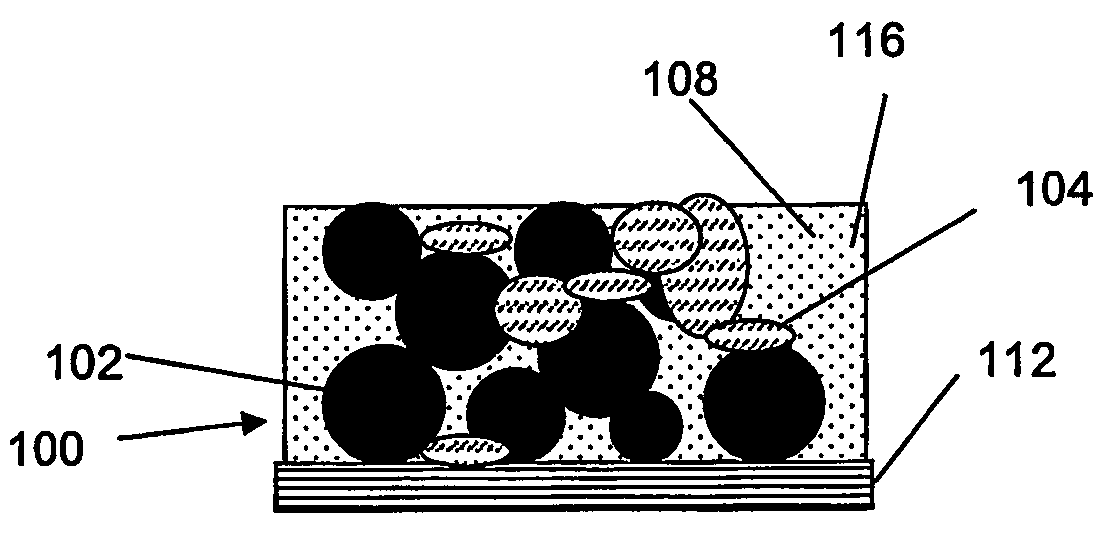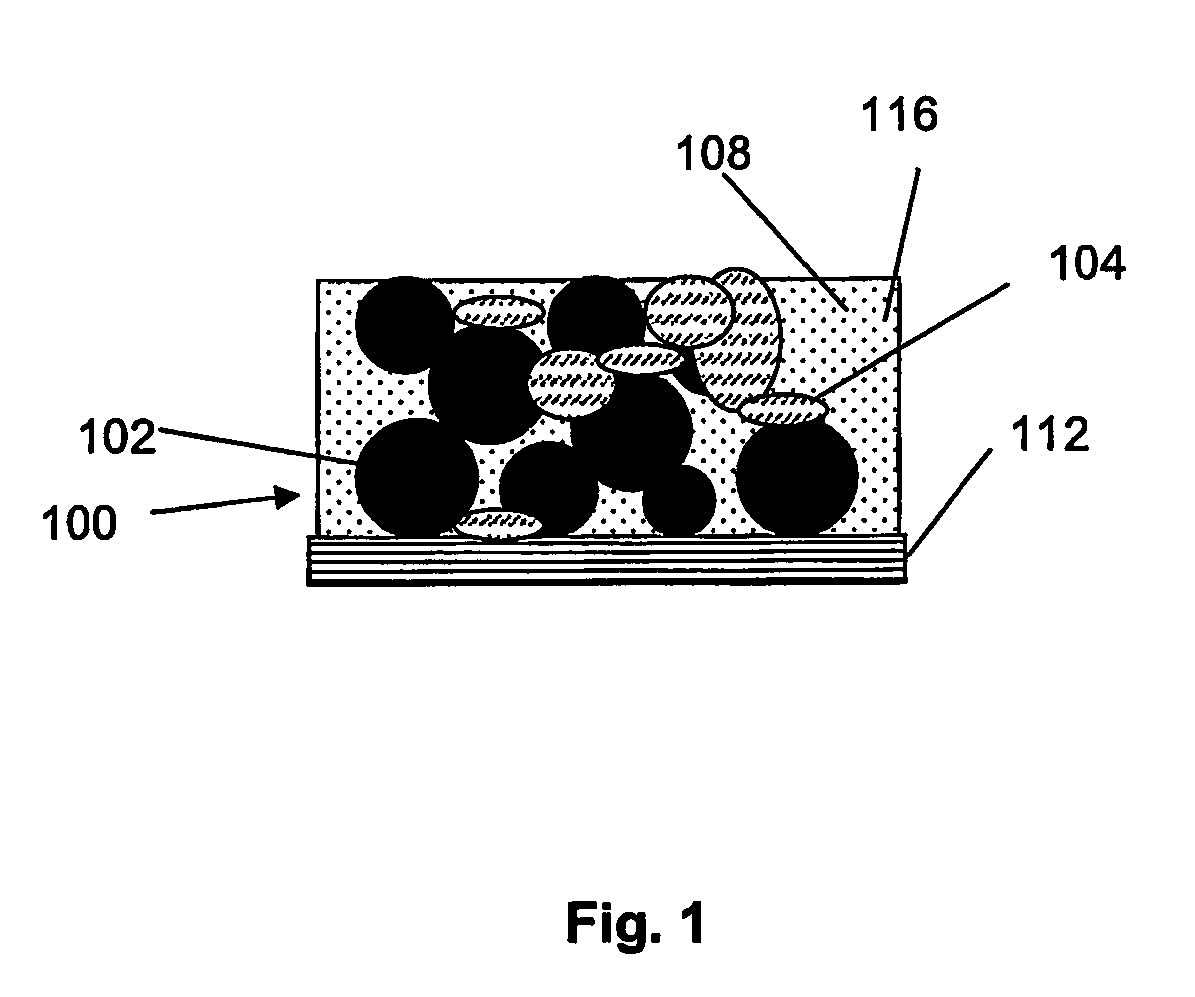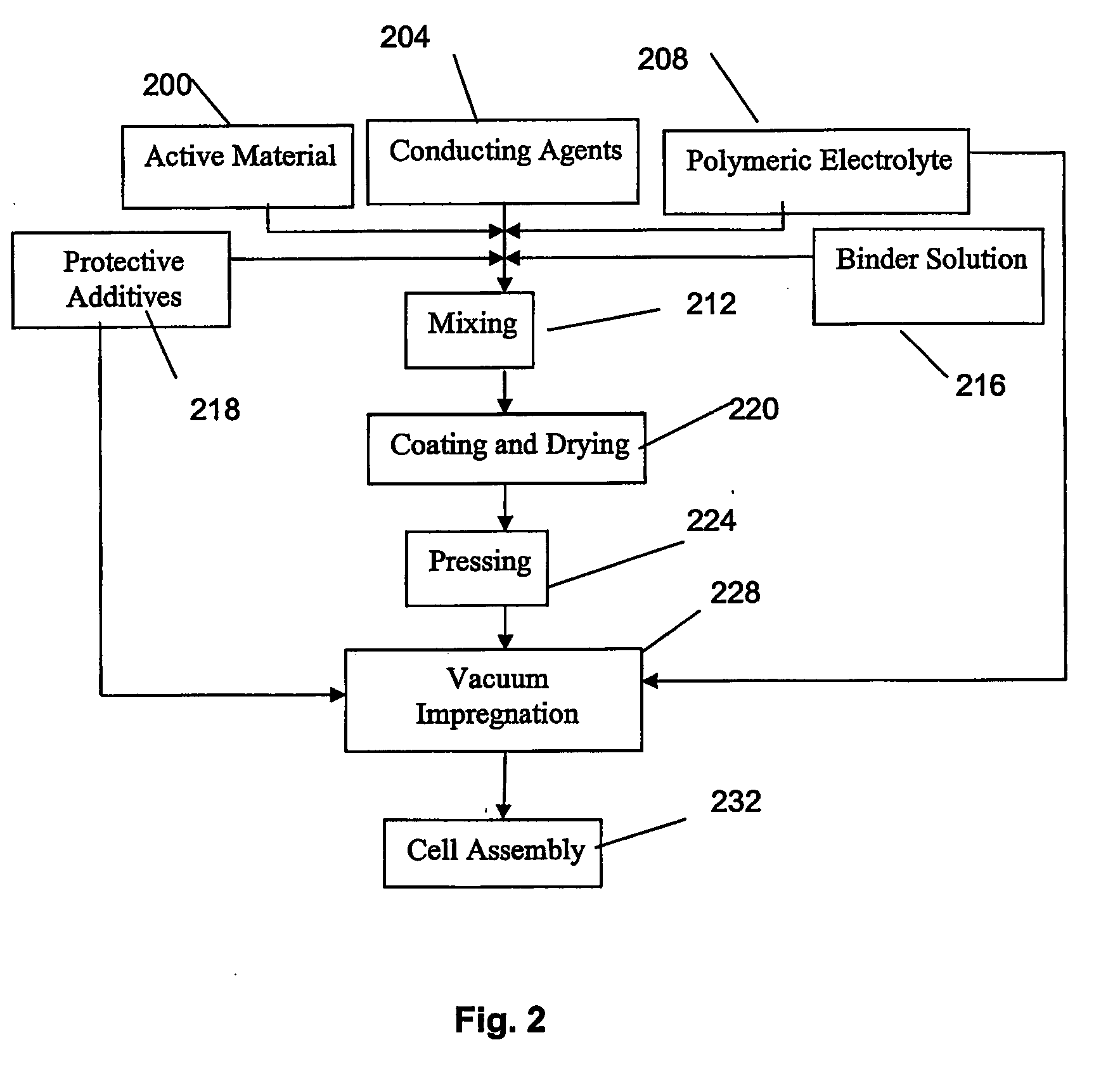Method for fabricating composite electrodes
a composite electrode and electrode technology, applied in the field of polymer battery fabrication methods, can solve the problems of limited application in lithium ion secondary batteries, significant loss of calendar life, and raised safety concerns, and achieve the effects of reducing porosity, reducing production costs, and reducing production costs
- Summary
- Abstract
- Description
- Claims
- Application Information
AI Technical Summary
Benefits of technology
Problems solved by technology
Method used
Image
Examples
Embodiment Construction
Table 1 summarizes experiments carried out with the purpose of cycling the electrode when using different methods of incorporating the polymer in the electrodes. As can be seen, all the processes of electrolyte filling (after casting of the electrode) were unsuccessful due to the high viscosity of the electrolyte and its inability to penetrate the electrode material.
TABLE 1Capacity of carbon materials and processes used for polymerelectrolyte filling carbon-lithium metal cells.CapacityMethodDescription(mAh / g)StandardSame as lithium ion coin cell1.6VacuumDip electrode into sioxane-PEO electrolyte91.8treatmentand put it in vacuum for 20 minStandard +Use standard method for cell assembly5.0High Temp.and 70° C., C / 14 formationformationDilution withDilute polysiloxane liquid* electrolyte withconventional1.2-M LiPF6 in EC:EMC(3:7)liquidand use standard method to assemble cellelectrolyte& Standard 5% siloxane143.050% siloxane102.080% siloxane35.6*PMHS3B = 3 oxygens, on side chain, no sp...
PUM
| Property | Measurement | Unit |
|---|---|---|
| wt % | aaaaa | aaaaa |
| voltages | aaaaa | aaaaa |
| density | aaaaa | aaaaa |
Abstract
Description
Claims
Application Information
 Login to View More
Login to View More - R&D
- Intellectual Property
- Life Sciences
- Materials
- Tech Scout
- Unparalleled Data Quality
- Higher Quality Content
- 60% Fewer Hallucinations
Browse by: Latest US Patents, China's latest patents, Technical Efficacy Thesaurus, Application Domain, Technology Topic, Popular Technical Reports.
© 2025 PatSnap. All rights reserved.Legal|Privacy policy|Modern Slavery Act Transparency Statement|Sitemap|About US| Contact US: help@patsnap.com



